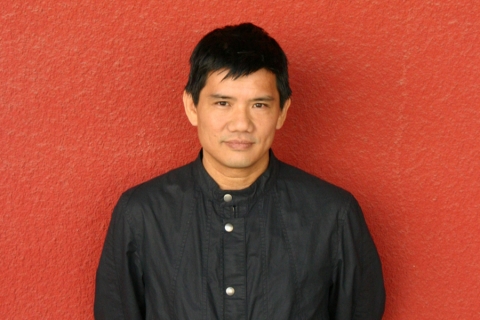Survey: Simon Leung
e-flux Education | July 27, 2021
Simon Leung is an artist who lives in Brooklyn and Los Angeles. He has taught at the University of California, Los Angeles; California Institute of the Arts; Rhode Island School of Design; New York University; and Skowhegan, in addition to the University of California, Irvine, since 2001, where he is a professor and cochair of the MFA program in art.
1. Why did you decide to go into teaching?
I didn’t have much of a plan before I started teaching, but I’ve been doing it pretty much my entire adult life. In 1990, I was a young artist in New York who started teaching in public high schools through an outreach program at the New Museum. I did that for seven years before teaching in art schools and universities. As time went on, teaching felt like a good fit and more and more meaningful as a way to be in the world.
2. What drew you to your school and what is your teaching philosophy?
Three things drew me to the University of California, Irvine (UCI). First, when I joined the faculty twenty years ago, the art department’s operative orientation as an interdisciplinary and conceptually oriented program with an ethos of challenging social and political structures like white supremacy and patriarchy was already in place. Second, UCI has historically been an important center for critical theory in the United States, with figures like Jacques Derrida looming large throughout the years. Critical theory is, by definition, interdisciplinary, so there is a lot of collaboration and dialogue across departments on campus and beyond. For instance, my thematic seminars have been cross-listed in Asian American Studies, Visual Studies, and Critical Theory, where I am also on the faculty board. Third, as one of the art schools in the Los Angeles area, UCI is part of a thriving community of artists supported by a combination of established institutions and DIY spaces, which is quite enriching.
My teaching philosophy gets a tune-up every once in a while, but in general, I think teaching functions in a setting where, because it is pedagogical, transference has already taken place. My task then is to hold that space with care and attention so as to defend the students’ right to an education. The content always varies from student to student or class to class, but the basic premise of listening deeply and responding accordingly remains.
3. What theory and art history do you consider most essential for your students? What artist or artwork do you refer to most often?
I once coedited, with Zoya Kocur, an art theory volume, Theory in Contemporary Art since 1985, which was published in two editions. The sections we devised for the second edition—“The Field of Contemporary Art,” “Practices and Models / Rethinking Form and Content,” “Culture / Identities / Political Agency,” “Postcolonial Critiques,” and “Art Subjects / Historical Subjects”—were indicative of what we thought at the time would be a basic education in theory for art students. In the decade since, I would include more writings that speak to the way the history of capitalism, imperialism, and colonization is bound up with mechanisms of the psyche and with the legacies of art traditions. In the last few years, I have taught from Lisa Lowe’s The Intimacies of Four Continents; Cheryl Harris and Sarah Ahmed’s work on Whiteness; and Anne Anlin Cheng’s work on race and melancholia. Leo Bersani remains important as a model for psychoanalytical thinking via form. Last year, I taught a seminar on Douglas Crimp because he was singular as someone who moved through different discourses (postmodern art criticism, AIDS activism, queer history/theory, film, dance) and who outlined his own investments as well as his limits. I often teach Rosalyn Deutsche and David Joselit because I appreciate how they are committed to thinking with art and lay out complicated arguments but also produce interpretations that open up rather than reaffirm art history. Some theorists whose work I teach, but not systematically, include Achille Mbembe and Catherine Malabou. Besides Marcel Duchamp, the artists I often want to think more deeply about with students are Yvonne Rainer, Adrian Piper, Emory Douglas, Christopher D’Arcangelo, and Tehching Hsieh.

